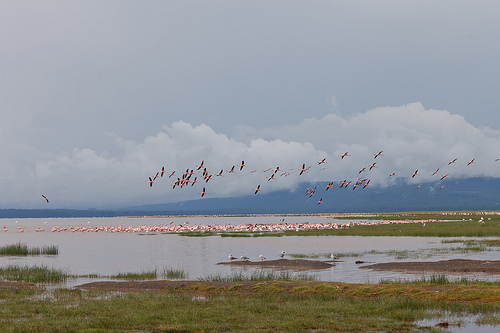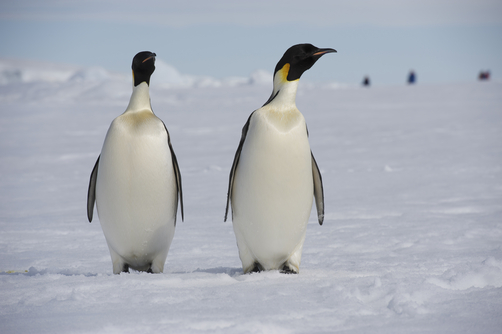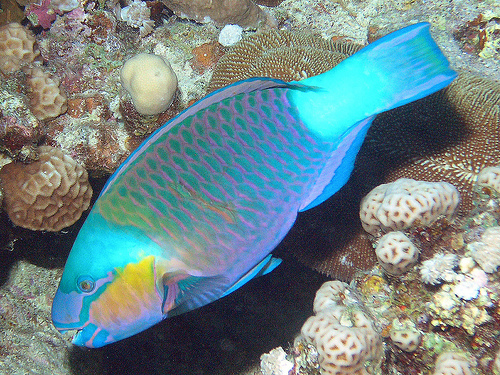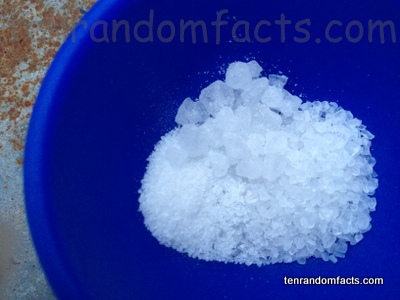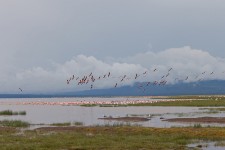
Lake Nakuru is a blue and pink lake.
- Lake Nakuru is an alkaline rich lake located in Kenya, Africa, in the East African Rift.
- Lake Nakuru has been included in Lake Nakuru National Park, since 1961, which supports endangered white rhinoceroses, black rhinoceroses and giraffes.
- Lake Nakuru covers an approximate area of up to 45 kilometres squared (17 miles squared) and has an approximate depth of 2.3 metres (7.5 feet).
- Lake Nakuru is popularly known for its abundant attraction of thousands to millions of flamingos, although this number has been diminishing, that feed on the large quantities of blue-green algae growing on the lake.
- Wildlife surrounding Lake Nakuru , in the national park, include black and white rhinoceroses, giraffes, waterbucks, lions, leopards, baboons, cheetahs, warthogs and pythons, as well as 300 different bird species.
Flamingos on Lake Nakuru
Image courtesy of Andrea Schieber/Flickr
- During 1951 to 1953, Lake Nakuru was dry, which led to programs of alkaline dust control.
- Lake Nakuru contains fauna including the salt tolerant fish, Tilapia grahami, clawless otters and hippopotamuses.
- Lake Nakuru is protected and is surrounded by a fence to deter poachers, and the word ‘nakuru’ is a local Maasai word meaning ‘dust’ or ‘dusty place’.
- In 2007, Lake Nakuru boasted a tourism count of nearly 347,000 people, which included visits from local Kenyans, as well as visitors from around the world.
- Lake Nakuru has been in danger of industrial and domestic pollution from nearby Nakuru town situated 4 km (2.5 miles) away, that causes poisonous water and shortage of algae, which has led to large migrations and fatalities of flamingos.



